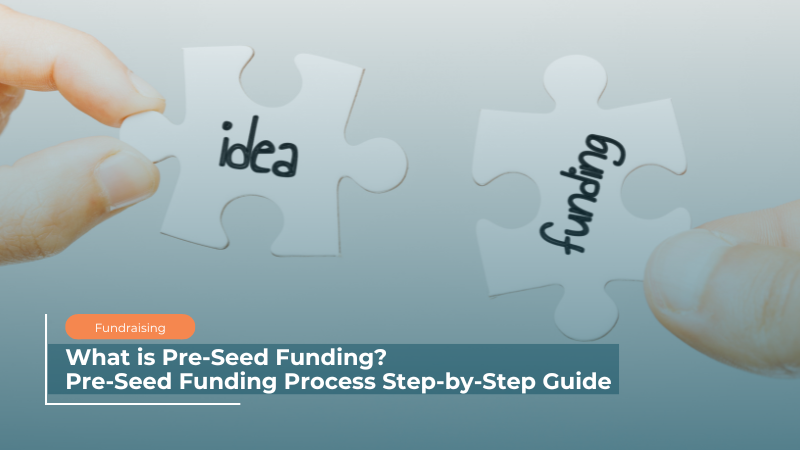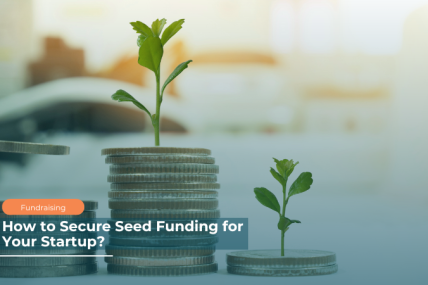What is Pre-Seed Funding?
Pre-seed funding is the earliest stage of startup financing, provided to entrepreneurs to help them develop their business idea, build a prototype, and prepare for the next stage of funding. This initial capital is crucial for transforming a concept into a viable business. Pre-seed funding typically comes from the founders themselves, family and friends, angel investors, or early-stage venture capital firms.
Key Characteristics:
- Early Stage: The funding is provided at the very beginning of the startup journey, often before the product is fully developed or the business model is validated.
- Small Amounts: The investment amounts are generally smaller compared to later funding stages, ranging from a few thousand to a few hundred thousand dollars.
- High Risk: Investors at this stage take on significant risk, as the startup is in its infancy with many uncertainties.
The Pre-Seed Funding Process: Step-by-Step Guide
1. Develop a Solid Business Idea
Identify a Problem and Solution: Begin with a clear identification of the problem you aim to solve and the solution your startup will provide. Pre-Seed Funding, Conduct thorough market research to validate the need for your product or service.
2. Create a Business Plan
Outline Your Vision: Develop a comprehensive business plan that outlines your startup’s vision, mission, target market, value proposition, revenue model, and go-to-market strategy.
3. Build a Minimum Viable Product (MVP)
Develop a Prototype: Create a minimum viable product (MVP) or prototype to demonstrate your idea. The MVP should include the core features necessary to solve the identified problem and provide value to early users.
4. Assemble a Founding Team
Recruit Key Talent: Build a strong founding team with complementary skills. Investors look for teams with technical expertise, business acumen, and a shared commitment to the startup’s vision.
5. Seek Initial Funding
Bootstrapping and Personal Savings: Many founders start by bootstrapping, using personal savings to fund initial development. This demonstrates commitment and reduces early reliance on external funding.
Friends and Family: Early funding often comes from friends and family who believe in your vision and are willing to invest in your startup’s potential.
6. Prepare Your Pitch
Create a Compelling Pitch Deck: Develop a pitch deck that effectively communicates your business idea, market opportunity, business model, traction (if any), and team. Keep it concise and visually appealing.
7. Identify Potential Investors
Research and Target Investors: Identify and research potential investors who focus on early-stage startups and have an interest in your industry. Look for angel investors, seed funds, and early-stage venture capital firms.
8. Reach Out to Investors
Networking and Introductions: Leverage your network to get introductions to potential investors. Attend startup events, pitch competitions, and industry conferences to connect with investors.
Cold Outreach: If you don’t have connections, consider cold emailing potential investors. Craft personalized and compelling emails that clearly state your value proposition and why you believe the investor would be interested.
9. Pitch to Investors
Present Your Pitch: Deliver your pitch to potential investors, highlighting the problem, solution, market opportunity, business model, and your team’s capabilities. Be prepared to answer questions and provide additional information.
10. Negotiate Terms and Close the Deal
Discuss Investment Terms: If investors are interested, discuss the terms of the investment, including the amount of funding, equity stake, and any other conditions. Be prepared to negotiate to reach mutually agreeable terms.
Due Diligence: Investors will conduct due diligence to verify your business claims, financial projections, and team background. Be transparent and provide all requested information promptly.
Finalize the Agreement: Once terms are agreed upon, finalize the investment agreement and legal documents. Ensure that all parties understand and agree to the terms before signing.
11. Utilize Funds to Achieve Milestones
Implement Your Plan: Use the pre-seed funding to achieve key milestones such as product development, market testing, user acquisition, and team expansion.
Track Progress and Communicate: Regularly track your progress against the milestones and keep your investors updated on developments and achievements. This builds trust and sets the stage for future funding rounds.
Conclusion
Pre-seed funding is a critical phase for startups, providing the necessary resources to develop a business idea into a viable product and prepare for subsequent funding stages. By following this step-by-step guide, entrepreneurs can effectively navigate the pre-seed funding process, secure the initial capital needed, and lay a solid foundation for future growth. Contact EvolutCo for more information!




